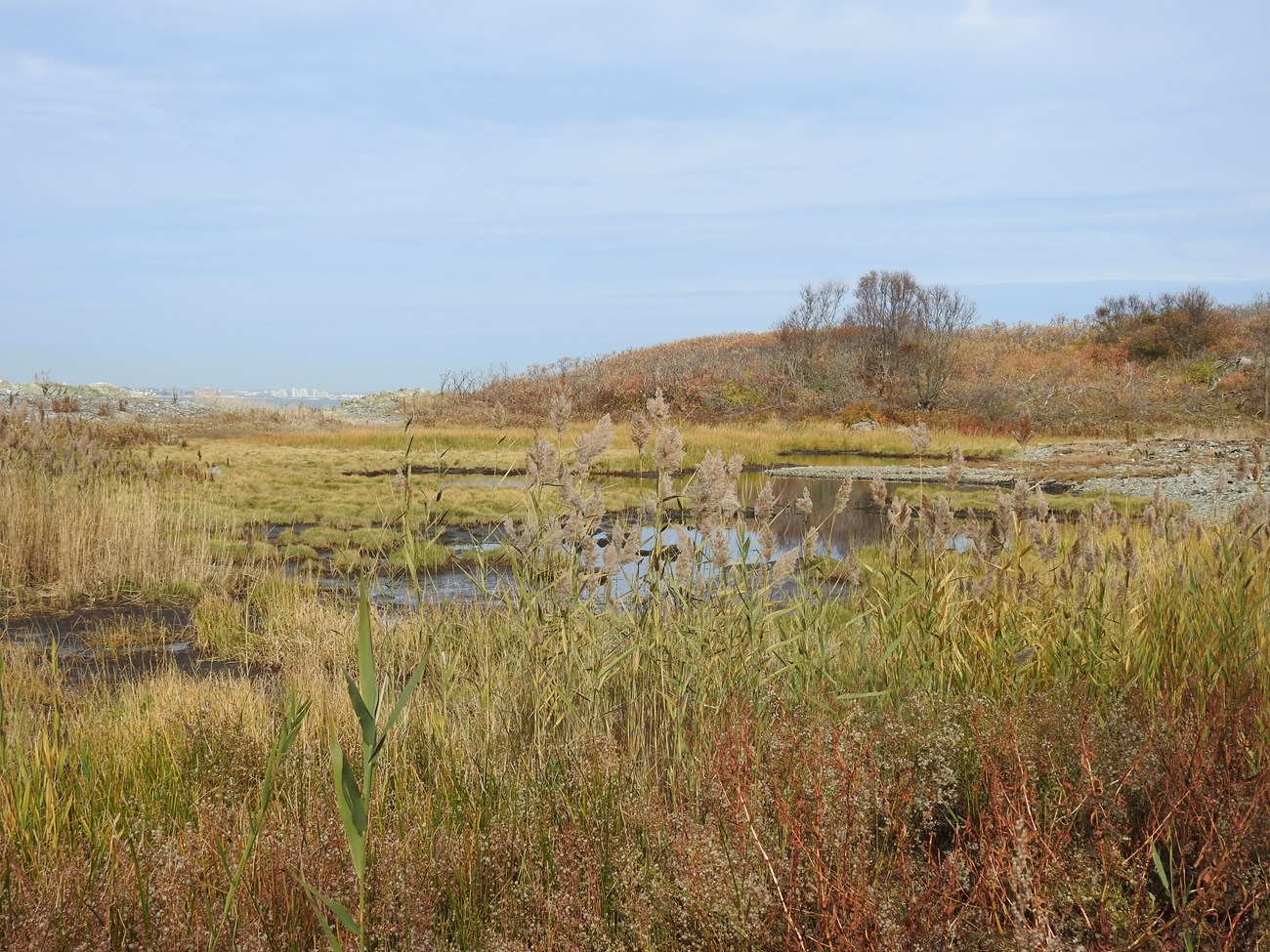
NPS Photo/ J. Delaney Tidal marshes, wildflowers, tall grasses, and wild fruit trees are some of the varying aspects of Calf Island. Calf Island, located in the outer harbor, has a wide variety of vegetation. Access to the island via private boat is not recommended. General InformationThis island of Boston Harbor Islands National and State Park is managed by the Massachusetts Department of Conservation and Recreation (DCR). Visitor Facilities & Services
Short HistoryPrior to European settle colonization, Indigenous peoples likely used the resources on the island seasonally for thousands of years. In the 1600s, the island was granted to Elder Brewster of Plimouth Colony. Later, Charles Apthorp owned the island, as well as other property in the Harbor, including Long Island. In 1789, the Massachusetts Humane Society constructed a "hut of refuge" here. James Turner (who later became the keeper of Bug Light at the western end of Brewster Spit) owned the island in 1845, he and built his home from two deckhouses that washed ashore from the wrecked steamer Ontario. In the same year, a small group of lobster fishermen occupied the island. They built small wooden shelters here. Illegal boxing matches were staged on the island in 1883. In 1902, Benjamin P. Cheney and his wife, actress Julia Arthur, built a colonial style, two-story summer estate with roofs used to collect rainwater. The last of the estate remains were burned in 1971, and in the 1990s vandals toppled one of two chimneys. The US Government acquired rights to the island during World War I until the end of World War II. Natural History OverviewVegetationThe windswept island has a thin layer of soil that supports grasses, shrubs and salt-tolerant trees. A 1903 newspaper article describes the island landscape: "... here are groves of wild cherries, clumps of sumac, precipitous cliffs interspersed with ideal stretches of beach, fringed with wild basaltic rocks. Here is pasturage for two Jerseys, soil enough for a garden, a miniature pond and broad stretches of lawn." Today the island supports wild cherry, beach plum, tall grasses, chives, and mock orange. Further research is needed to document remains from the Cheney's cultivated landscape. WildlifePlease see Animals page for more information. GeologyThe island is composed of bedrock covered with a thin layer of soil rising to an elevation of 38 feet. Water FeaturesThe center of the island contains a freshwater marsh. Views and VistasDowntown Boston and Deer Island are visible in the distance as well as surrounding islands: the Brewsters, Georges, Lovells and The Graves. Structures
|
Last updated: November 30, 2023
